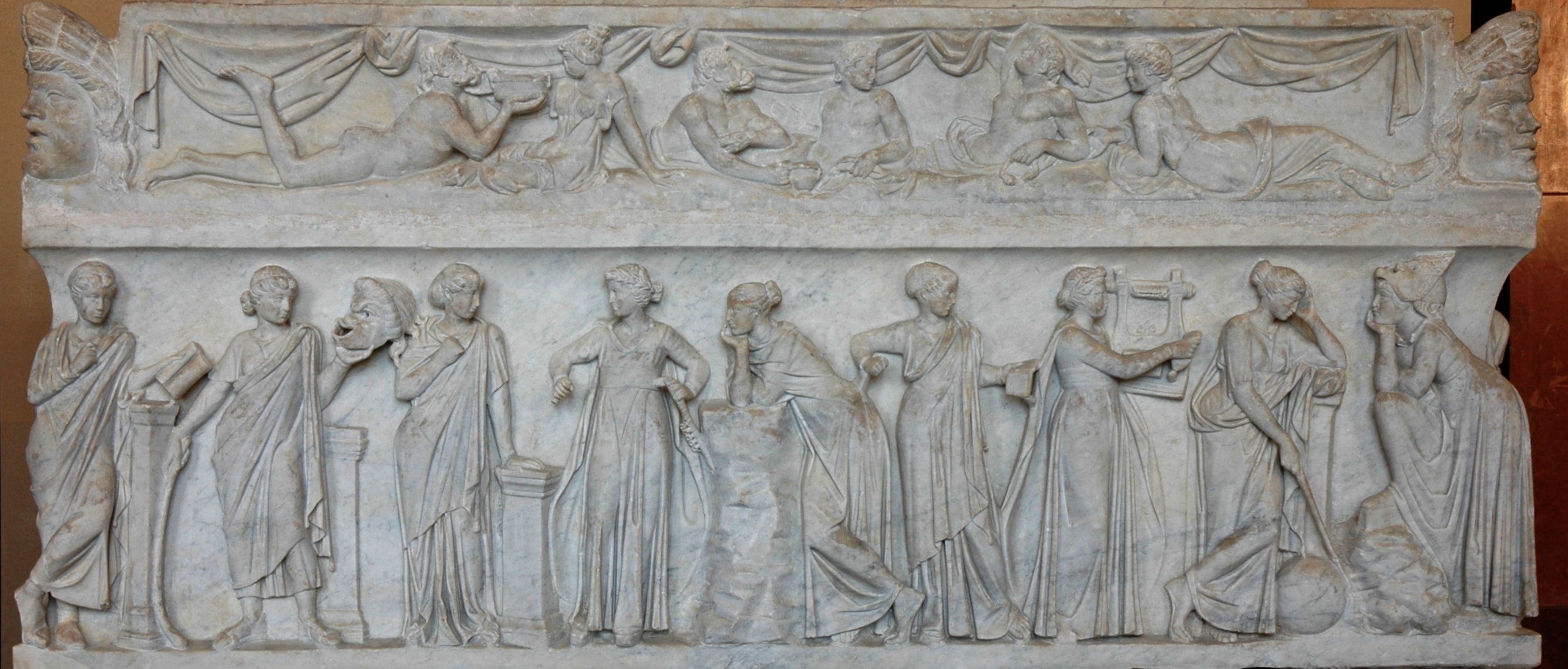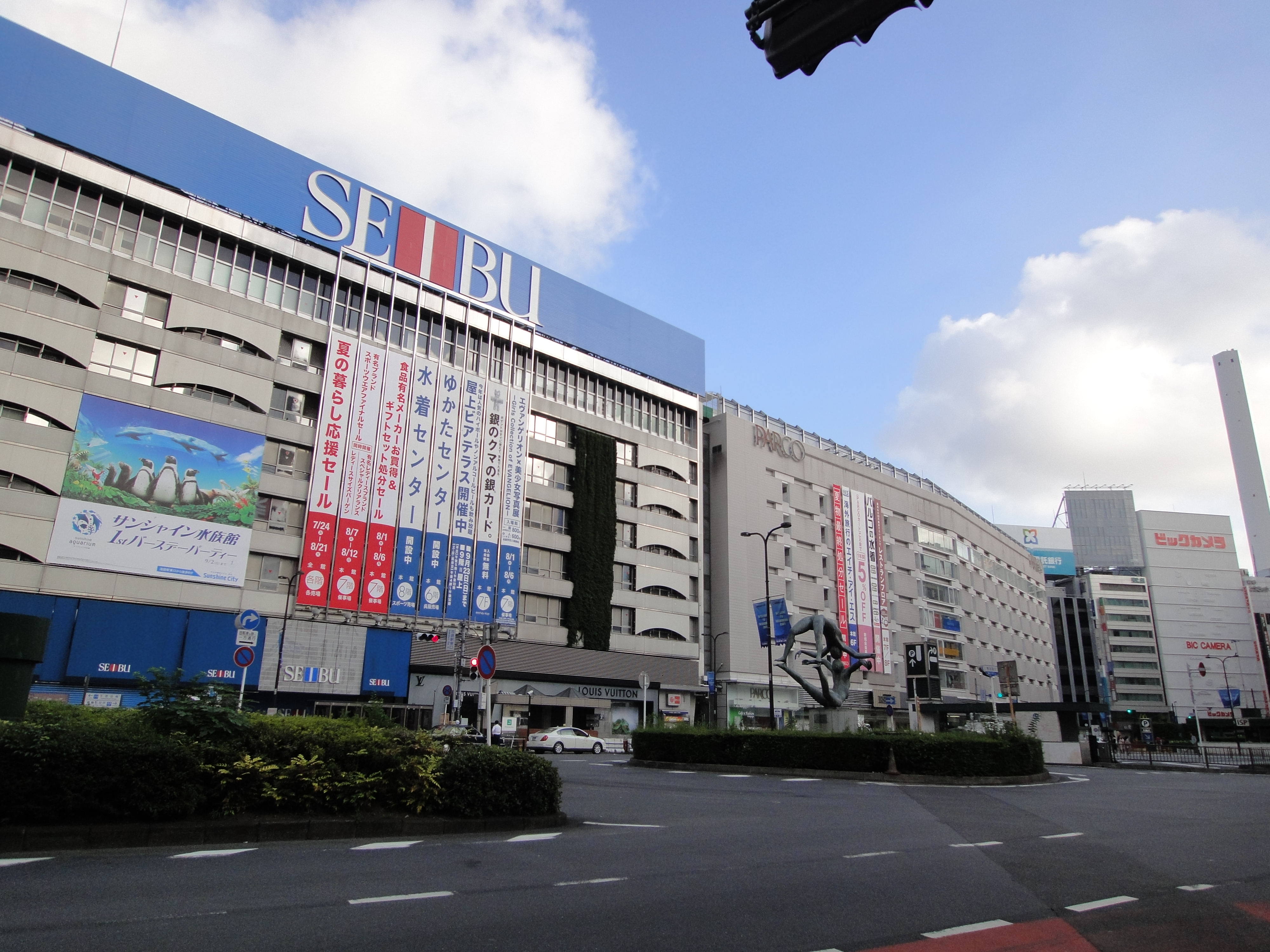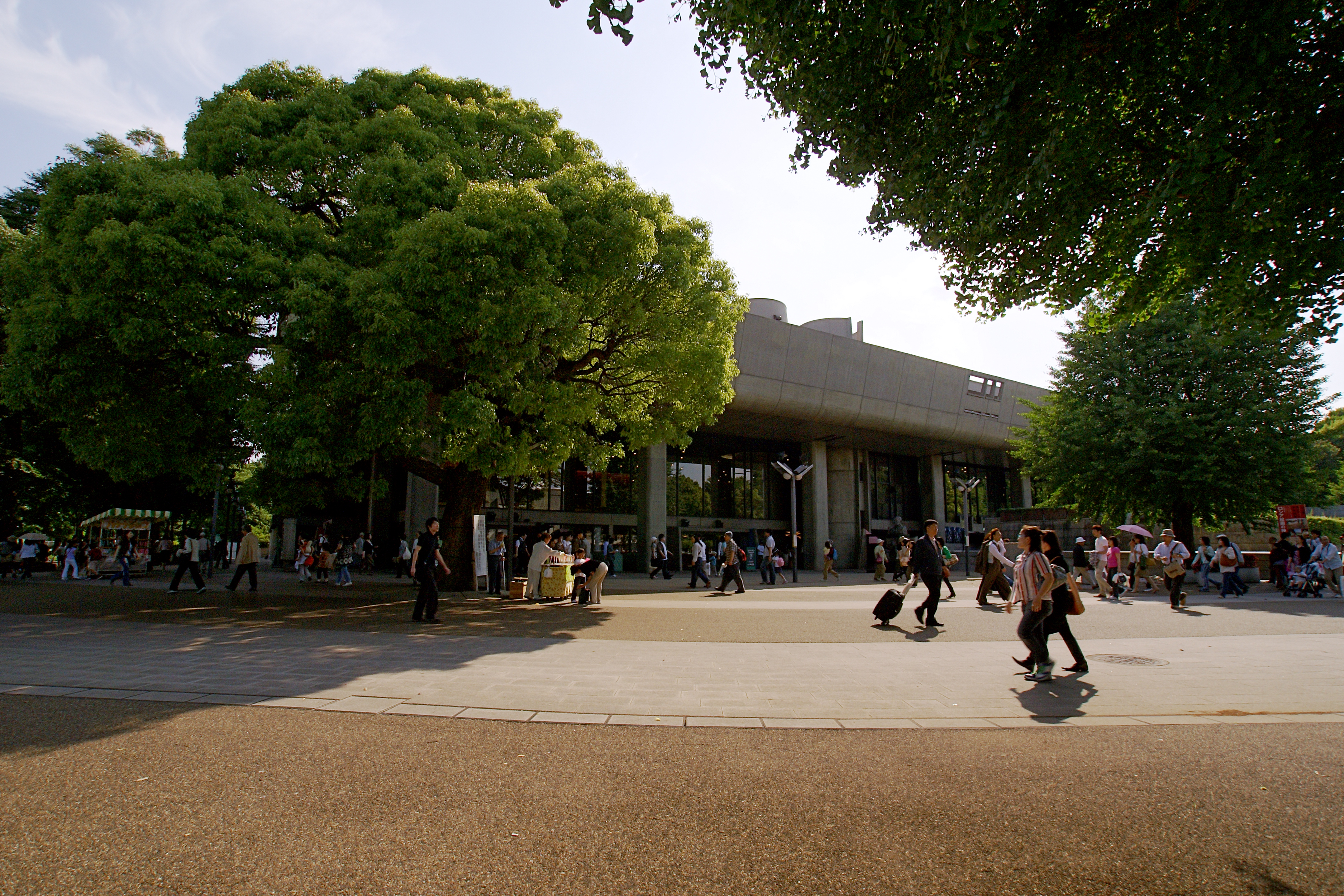|
Tokyo Metropolitan Theatre
is a centre for the performing arts located in Ikebukuro, Toshima, Tokyo, Japan. It opened in 1990 and is operated by Tokyo Metropolitan Foundation for History and Culture. There is a concert hall with 1999 seats and a playhouse with 834 seats as well as a number of smaller spaces. Yoshinobu Ashihara was the architect, with acoustical design by Nagata Acoustics. See also * Suntory Hall * Tokyo Bunka Kaikan * Sumida Triphony Hall * Ikebukuro Station Ikebukuro Station ( ja, 池袋駅, ) is a major railway station located in the Ikebukuro district of Toshima, Tokyo, Japan, shared by the East Japan Railway Company (JR East), Tokyo subway operator Tokyo Metro, and the two private railway operato ... References External links * {{Authority control Theatres in Tokyo Music venues in Tokyo Concert halls in Japan Arts centres in Japan Music venues completed in 1990 Theatres completed in 1990 1990 establishments in Japan Buildings and structures in Toshima Ikebukuro [...More Info...] [...Related Items...] OR: [Wikipedia] [Google] [Baidu] |
Ikebukuro
is a commercial and entertainment district in Toshima, Tokyo, Japan. Toshima ward offices, Ikebukuro station, and several shops, restaurants, and enormous department stores are located within city limits. It is considered the second largest adult entertainment district in Tokyo. Transportation At the center of Ikebukuro is the train and subway station, a huge urban gathering shared by the JR East lines, the Seibu Ikebukuro Line and the Tōbu Tōjō Line. It is one of the main commuter hubs in the western Yamanote area of Tokyo. Ikebukuro Station is the third-busiest station in Japan, and the world. Cultural attractions Around the station are the Seibu and Tōbu department stores. Seibu, written with the characters for , is on the east end of the station and Tōbu, written with the characters for , is on the west end. East of the station, on the site of Sugamo Prison, stands Sunshine 60, which was the tallest building in Asia at the time of its construction. Sunshine 60 ... [...More Info...] [...Related Items...] OR: [Wikipedia] [Google] [Baidu] |
Theatres In Tokyo
Theatre or theater is a collaborative form of performing art that uses live performers, usually actors or actresses, to present the experience of a real or imagined event before a live audience in a specific place, often a stage. The performers may communicate this experience to the audience through combinations of gesture, speech, song, music, and dance. Elements of art, such as painted scenery and stagecraft such as lighting are used to enhance the physicality, presence and immediacy of the experience. The specific place of the performance is also named by the word "theatre" as derived from the Ancient Greek θέατρον (théatron, "a place for viewing"), itself from θεάομαι (theáomai, "to see", "to watch", "to observe"). Modern Western theatre comes, in large measure, from the theatre of ancient Greece, from which it borrows technical terminology, classification into genres, and many of its themes, stock characters, and plot elements. Theatre artist Patrice Pav ... [...More Info...] [...Related Items...] OR: [Wikipedia] [Google] [Baidu] |
1990 Establishments In Japan
Year 199 ( CXCIX) was a common year starting on Monday (link will display the full calendar) of the Julian calendar. At the time, it was sometimes known as year 952 ''Ab urbe condita''. The denomination 199 for this year has been used since the early medieval period, when the Anno Domini calendar era became the prevalent method in Europe for naming years. Events By place Roman Empire * Mesopotamia is partitioned into two Roman provinces divided by the Euphrates, Mesopotamia and Osroene. * Emperor Septimius Severus lays siege to the city-state Hatra in Central-Mesopotamia, but fails to capture the city despite breaching the walls. * Two new legions, I Parthica and III Parthica, are formed as a permanent garrison. China * Battle of Yijing: Chinese warlord Yuan Shao defeats Gongsun Zan. Korea * Geodeung succeeds Suro of Geumgwan Gaya, as king of the Korean kingdom of Gaya (traditional date). By topic Religion * Pope Zephyrinus succeeds Pope Victor I, as the ... [...More Info...] [...Related Items...] OR: [Wikipedia] [Google] [Baidu] |
Theatres Completed In 1990
Theatre or theater is a collaborative form of performing art that uses live performers, usually actors or actresses, to present the experience of a real or imagined event before a live audience in a specific place, often a stage. The performers may communicate this experience to the audience through combinations of gesture, speech, song, music, and dance. Elements of art, such as painted scenery and stagecraft such as lighting are used to enhance the physicality, presence and immediacy of the experience. The specific place of the performance is also named by the word "theatre" as derived from the Ancient Greek θέατρον (théatron, "a place for viewing"), itself from θεάομαι (theáomai, "to see", "to watch", "to observe"). Modern Western theatre comes, in large measure, from the theatre of ancient Greece, from which it borrows technical terminology, classification into genres, and many of its themes, stock characters, and plot elements. Theatre artist Patrice ... [...More Info...] [...Related Items...] OR: [Wikipedia] [Google] [Baidu] |
Music Venues Completed In 1990
Music is generally defined as the art of arranging sound to create some combination of form, harmony, melody, rhythm or otherwise expressive content. Exact definitions of music vary considerably around the world, though it is an aspect of all human societies, a cultural universal. While scholars agree that music is defined by a few specific elements, there is no consensus on their precise definitions. The creation of music is commonly divided into musical composition, musical improvisation, and musical performance, though the topic itself extends into academic disciplines, criticism, philosophy, and psychology. Music may be performed or improvised using a vast range of instruments, including the human voice. In some musical contexts, a performance or composition may be to some extent improvised. For instance, in Hindustani classical music, the performer plays spontaneously while following a partially defined structure and using characteristic motifs. In modal j ... [...More Info...] [...Related Items...] OR: [Wikipedia] [Google] [Baidu] |
Arts Centres In Japan
The arts are a very wide range of human practices of creative expression, storytelling and cultural participation. They encompass multiple diverse and plural modes of thinking, doing and being, in an extremely broad range of media. Both highly dynamic and a characteristically constant feature of human life, they have developed into innovative, stylized and sometimes intricate forms. This is often achieved through sustained and deliberate study, training and/or theorizing within a particular tradition, across generations and even between civilizations. The arts are a vehicle through which human beings cultivate distinct social, cultural and individual identities, while transmitting values, impressions, judgments, ideas, visions, spiritual meanings, patterns of life and experiences across time and space. Prominent examples of the arts include: * visual arts (including architecture, ceramics, drawing, filmmaking, painting, photography, and sculpting), * literary arts (inc ... [...More Info...] [...Related Items...] OR: [Wikipedia] [Google] [Baidu] |
Concert Halls In Japan
A concert is a live music performance in front of an audience. The performance may be by a single musician, sometimes then called a recital, or by a musical ensemble, such as an orchestra, choir, or band. Concerts are held in a wide variety and size of settings, from private houses and small nightclubs, dedicated concert halls, amphitheatres and parks, to large multipurpose buildings, such as arenas and stadiums. Indoor concerts held in the largest venues are sometimes called ''arena concerts'' or ''amphitheatre concerts''. Informal names for a concert include ''show'' and ''gig''. Regardless of the venue, musicians usually perform on a stage (if not actual then an area of the floor designated as such). Concerts often require live event support with professional audio equipment. Before recorded music, concerts provided the main opportunity to hear musicians play. For large concerts or concert tours, the challenging logistics of arranging the musicians, venue, equipment and aud ... [...More Info...] [...Related Items...] OR: [Wikipedia] [Google] [Baidu] |
Music Venues In Tokyo
Music is generally defined as the art of arranging sound to create some combination of form, harmony, melody, rhythm or otherwise expressive content. Exact definitions of music vary considerably around the world, though it is an aspect of all human societies, a cultural universal. While scholars agree that music is defined by a few specific elements, there is no consensus on their precise definitions. The creation of music is commonly divided into musical composition, musical improvisation, and musical performance, though the topic itself extends into academic disciplines, criticism, philosophy, and psychology. Music may be performed or improvised using a vast range of instruments, including the human voice. In some musical contexts, a performance or composition may be to some extent improvised. For instance, in Hindustani classical music, the performer plays spontaneously while following a partially defined structure and using characteristic motifs. In modal jazz ... [...More Info...] [...Related Items...] OR: [Wikipedia] [Google] [Baidu] |
Ikebukuro Station
Ikebukuro Station ( ja, 池袋駅, ) is a major railway station located in the Ikebukuro district of Toshima, Tokyo, Japan, shared by the East Japan Railway Company (JR East), Tokyo subway operator Tokyo Metro, and the two private railway operators Seibu Railway and Tobu Railway. With 2.71 million passengers on an average daily in 2007, it is the second-busiest railway station in the world (after Shinjuku Station), and the busiest station in the Tobu, Seibu, and Tokyo Metro networks. It primarily serves commuters from Saitama Prefecture and other residential areas northwest of the city center. It is the Tokyo terminal of the Seibu Ikebukuro Line and the Tobu Tojo Line. Lines JR East Seibu Railway Seibu Ikebukuro Line (Ikebukuro to Agano) - limited through service to Seibu Chichibu Line Tobu Railway Tōbu Tōjō Line (Ikebukuro to Yorii) Tokyo Metro Station layout In Ikebukuro Station, there are two main entrances; the East exit and the West exit. There are a number o ... [...More Info...] [...Related Items...] OR: [Wikipedia] [Google] [Baidu] |
Toshima, Tokyo
is a special ward in Tokyo, Japan. It is one of the eight central wards of the Tokyo Metropolitan area. Located in the northern area of Tokyo, Toshima is bordered by the wards of Nerima, Itabashi, and Kita in the north and Nakano, Shinjuku, and Bunkyo in the south. The ward was founded on March 15, 1947, and reached a peak resident population of 370,000 in 1965. The population has continued to decline and as of May 1, 2015, the ward had an estimated population of 298,250, with a population density of 22,920 persons per km2. During the day the population swells with commuters, resulting in a daytime population of around 378,475. The total land area of Toshima is 13.01 km2, sitting on a moderate plateau with a difference of 28 m between the ward's highest and lowest points. Approximately 47% of Toshima's land is residential, and 20% is commercial and public areas. Although Toshima is a ward, it is referred to as a city. The ward offices are located in Ikebukuro, which is als ... [...More Info...] [...Related Items...] OR: [Wikipedia] [Google] [Baidu] |
Sumida Triphony Hall
is a concert hall in Sumida, Tokyo, Japan. It opened in 1997 and has two auditoria; the main hall, with 1,801 seats; and the small hall, with 252 seats. It is the home of the New Japan Philharmonic. Nikken Sekkei were the architects, with acoustical design by Nagata Acoustics, who tested their concept with a 1:10 model. See also * Kinshichō Station * Suntory Hall The is a concert venue in the central Akasaka district of Tokyo, Japan. Part of the Ark Hills complex, it consists of a main concert hall, widely considered one of the finest in the world for its acoustics — indeed Herbert von Karajan called i ... References External links Homepage New Japan Philharmonic {{Authority control Buildings and structures in Sumida, Tokyo Music venues in Tokyo Concert halls in Japan Music venues completed in 1997 1997 establishments in Japan ... [...More Info...] [...Related Items...] OR: [Wikipedia] [Google] [Baidu] |
Tokyo Bunka Kaikan
The is a Japanese concert hall located in Ueno Park, Taitō, Tokyo. Designed by Japanese architect Kunio Maekawa, it was built in 1961 and renovated in 1998–99. Its larger hall seats 2303 people, and its small hall seats 649. It is operated by the Tokyo Metropolitan Foundation for History and Culture. Venues *Main Hall *Recital Hall Access * Ueno Station (with JR East and Tokyo Metro) * Keisei Ueno Station (with Keisei Electric Railway) See also * Suntory Hall * New National Theatre Tokyo The is Japan's first and foremost national centre for the performing arts, including opera, ballet, contemporary dance and drama. It is located in the Shinjuku area of Tokyo. Since 1997 more than 650 productions were staged. There are about 300 pe ... * Sōgakudo Concert Hall External links * Music venues in Tokyo Concert halls in Japan Ueno Park Buildings and structures in Taitō Music venues completed in 1961 1961 establishments in Japan {{Japan-thea ... [...More Info...] [...Related Items...] OR: [Wikipedia] [Google] [Baidu] |









